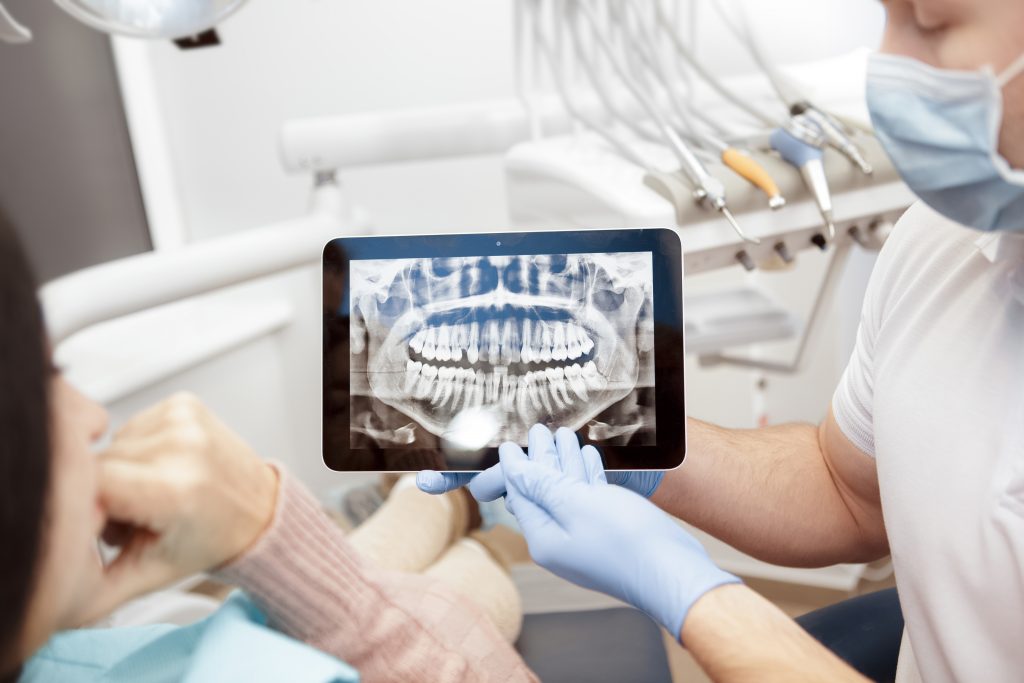Introduction
When it comes to our appearance, there are very few things that draw the eye more than imperfections in our teeth. Blemishes on the face and texture on the skin are less distracting and more quickly addressed, but dental problems and aesthetic issues are often more visible and therefore make patients more self conscious. Because of this, dental procedures that address physical and visual features have grown in popularity. With the help of aesthetic dentistry, issues of misalignment, coloring, overcrowding can now be effectively addressed. Highly qualified and well-trained dental professionals are able to provide treatments that allow patients to feel more confident in their appearance, as well as guide them through treatment plans that maintain their dental and oral health. To learn about aesthetic dentistry and its key differences from cosmetic dentistry, read more in this comprehensive guide.
What does aesthetic mean in dentistry?
The practice of dentistry is a broad and encompassing one, including more intensive procedures that address severe dental issues. Aesthetic dentistry often does not deal in these intensive procedures that lean more towards the medical and physical aspect of a patient’s teeth, gums, and jaw. Rather, the practice of aesthetic dentistry deals in less invasive methods that address a number of aesthetic dental concerns. Some of these procedures can include:
- Correcting misalignment issues
- Brightening up dull or yellowing teeth
- Replacing teeth that are missing or filling in conspicuous gaps between teeth
- Correcting size and proportion issues
- Addressing bite problems
- Restoring teeth with damage issues, such as chipped, decayed, cracked, or broken teeth
Although aesthetic dentistry often doesn’t involve major surgical procedures that resolve severe dental problems, it can be incredibly effective in addressing issues that can affect a patient’s self-confidence. Treatments that fall under the category of aesthetic dentistry can also prevent more extreme dental problems that will require invasive procedures, such as jaw misalignment caused by misaligned teeth. To explore an innovative, effective, and discreet alternative for aesthetic dentistry, learn how ALINA works.
What is the difference between aesthetic dentistry and cosmetic dentistry?
While they share some similarities, cosmetic and aesthetic dentistry are distinct disciplines that address different issues using different methods. Below is a brief distinction between the two similar practices:
- Cosmetic dentistry deals primarily in improving the look of teeth using dental procedures such as teeth whitening, veneers, and other techniques. The core of cosmetic dentistry is to achieve perfectly aligned and bright white teeth rather than to address other oral health issues. This means that while cosmetic dentistry is an important practice in itself, aesthetic dentistry is often considered more essential especially when it comes to resolving urgent or emergent dental problems.
- Aesthetic dentistry not only focuses on the appearance of teeth but also their functionality with the rest of the mouth as a whole. Apart from invisible braces that help align teeth and improve the functionality of the mouth when chewing and speaking, aesthetic dentistry can also include regular cleaning, teeth restoration with bridges and fillings, and root canal removals. When it comes to aesthetic dentistry, the goal is not only a beautiful smile but also good oral health, and this distinction often makes aesthetic dentistry a more well grounded practice than cosmetic dentistry.

What is an example of aesthetic dentistry?
Aesthetic dentistry is a practice that encompasses a number of different procedures, all with the goal of improving a patient’s oral functionality, oral health, and oral hygiene. There can also sometimes be some overlap between restorative and aesthetic dentistry. Below are some of the most common treatments that fall under the umbrella of aesthetic dentistry
- Teeth Restoration:
Missing or damaged teeth can pose problems to a patient’s dental health and oral functionality, because ideally the mouth is a well-calibrated system that helps the patient perform functions such as chewing or speaking. Having evident gaps or teeth that are on their way to disrepair hinders the mouth from performing these functions, and damaged teeth can sometimes cause further problems. Decaying teeth can bring pain, chipped or broken teeth can have jagged edges that scrape the tongue and inner cheeks. Aesthetic dentistry can help address these issues, remedying them before they pose any further risks and issues.
- Deep cleaning:
When it comes to daily maintenance, a patient’s oral hygiene routine (done well) can suffice to eliminate food debris and other substances that get stuck in between teeth and all over the mouth. However stubborn stains and cavities can develop over time, presenting the need for deep cleaning. This treatment gets in between teeth and hard to reach spots that can accumulate debris and cause stains, as well as scrubbing the surface of the teeth to reveal the natural and healthy color underneath. Deep cleaning can also significantly lower the risks of dental and problems caused by poor hygiene, such as cavities and halitosis.
- Teeth Alignment:
Among the treatments under the category of aesthetic dentistry, teeth alignment can be considered one of the most valuable because it significantly improves the appearance of teeth as a whole while improving oral health and functionality. Misaligned or overcrowded teeth can often affect a patient’s bite, negatively affecting the way the mouth moves and functions as well as setting the jaw in an unnatural and askew position. With teeth alignment, not only does a patient’s smile improve, so does the health of the rest of the mouth. Teeth alignment can take many forms, but one of the best options available are invisible braces that are discreet, non disruptive and highly effective. Invisible braces prices can vary across different providers, so when choosing a clinic it is important that you choose one with quality materials, years of expertise, and an excellent track record.
Why is aesthetic dentistry important?
Ultimately, aesthetic dentistry serves two purposes at once. Treatments considered as aesthetic dentistry allow the patient to feel confident in themselves through procedures that improve the appearance of their teeth, giving them a healthier and more beautiful smile. Just as important, it addresses some dental and oral health issues that can affect the functionality of the teeth, allowing patients to eat and speak normally and maintain their teeth throughout the years.
How ALINA Invisible Braces play a role in aesthetic dentistry
ALINA invisible braces help patients with a core aspect of aesthetic dentistry: dental alignment for a healthier bite and more beautiful smile. That’s because our invisible braces are made with:
- Better materials – Our invisible braces are made from a perfectly transparent, space-age material that’s FDA approved and completely hypoallergenic.
- Better technology – With AlinaSmile AI technology, ALINA takes into consideration all of your facial features to help you achieve your most beautiful smile.
- Better results – Over 25 years, ALINA has helped uncover the smiles of more than a million happy patients in the US, Canada, and the UK.
Take the first step closer to your dream smile and book a consult today.

